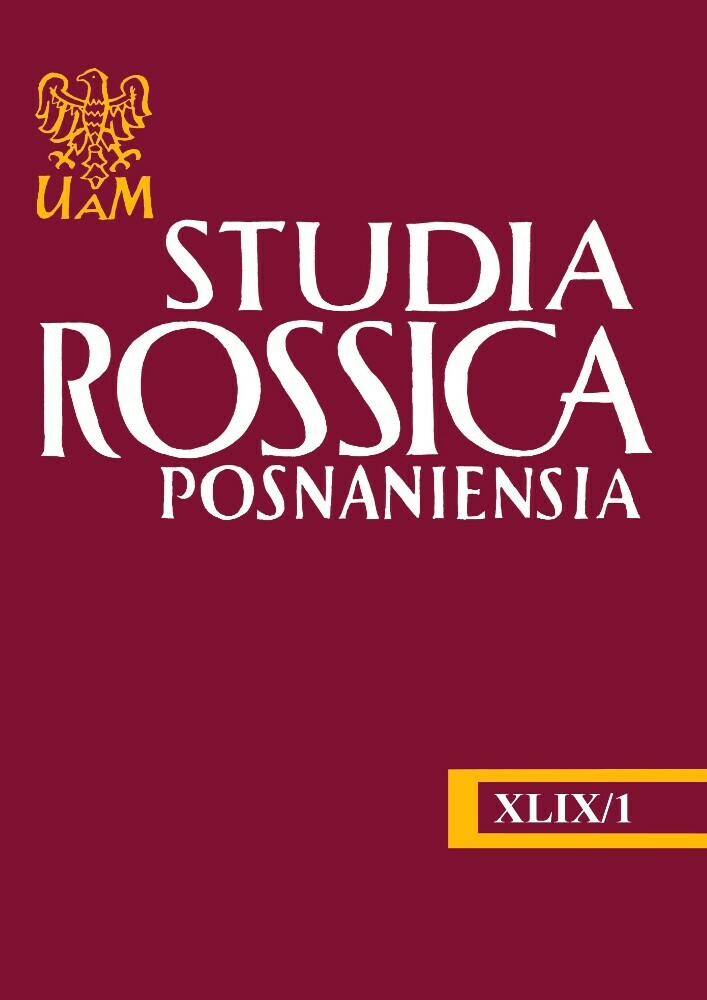Abstrakt
Memorial plaques are one of the most common forms of commemorative practices. Organically fitting into the geographical and socio-cultural landscape and having several functions, memorial plaques not only become a kind of marker of a “site of memory” (lieu de mémoire), play an important role in preserving names, transmitting historical memory, but also contribute to the construction and consolidation in the mass consciousness of ideologically verified representations of historical political events. Various “initiatives from below” and projects of independent activists (for example, the “Last Address” (“Poslednij adres”) project with memorial tablets to victims of state terror or the anonymous “questions about repressions” action discussed in this article) become vivid examples of how today’s Russian civil society reacts to a unilateral submission historical facts by power structures. The organizers of such actions become new actors in the politics of memory. They seek not only to expand the space of specific “places of memory” – memorial plaques and their contents – but also to change the perception of certain historical events and attitudes towards them. On the example of memorial plaques as a form of commemoration, the article examines the communicative strategies of different groups of memory subjects in modern Russia.
Bibliografia
„30 oktâbrâ – Den’ pamâti žertv političeskih repressij”. Regnum. Web. 01.05.2023. https://regnum.ru/news/polit/534902.html.
„A čto s nim slučilos’ v 1937-m?”. Novaâ gazeta. Web. 01.05.2023. https://novayagazeta.ru/articles/2020/10/29/87755-a-chto-s-nim-sluchilos-v-1937-m.
„Aktivisty «zadali voprosy» k memorial’nym doskam žertvam repressij”. Radio Svoboda. Web. 01.05.2023. https://www.svoboda.org/a/30919152.html.
Assmann Aleida. „Re-framing memory. Between individual and collective forms of constructing the past”. Performing the past: Memory, history, and identity in modern Europe. Eds. Karin Tilmans, Frank van Vree, Jay Winter. Amsterdam, Amsterdam University Press, 2010.
Barannikova, Alisa. „Markirovanie social’noj pamâti v gorodskom prostranstve: memorial’nye doski v formirovanii kul’turnogo landšafta goroda”. Sociologiâ Vlasti, 29 (1), 2017, s. 156–175. DOI: https://doi.org/10.22394/2074-0492-2017-1-156-175
„Bela Kun”. Martirolog rasstrelânnyh v Moskve i Moskovskoj oblasti. Web. 01.05.2023. https://www.sakharov-center.ru/asfcd/martirolog/?t=page&id=8282.
Besedina, Elena, Tat’âna Burkova. „«Gorod dolžen govorit’…»: memorial’naâ doska kak znak kommemoracii i kommunikacii v sociokul’turnom prostranstve”. Lûdi i teksty. Istoričeskij al’manah. Zakaz na istoriû? Aktualizaciâ informacionnogo prostranstva prošlogo. Red. M. Bobkova. Moskva, Institut vseobščej istorii RAN, 2014, s. 150–174.
Besedina, Elena, Tat’âna Burkova. „Kommemorativnye znaki (na primere memorial’nyh dosok) v pravovom prostranstve regionov Rossijskoj Federacii: k postanovke problemy”. Gumanitarnyj Naučnyj Vestnik, 1, 2018, s. 1–11.
Besedina, Elena, Tat’âna Burkova. „«Ot doski do doski»: konstruirovanie mifa i poisk identičnosti v znakah kommemoracii (na primere memorial’nyh dosok)”. Lûdi i teksty. Istoričeskijal’manah. Zakaz na istoriû? Aktualizaciâ informacionnogo prostranstva prošlogo. Red. M. Bobkova. Moskva, Institut vseobščej istorii RAN, 2019, s. 178–186.
Bykova, Elena. Modul’nyj tekst v massovoj kommunikacii: zakonomernosti rečevoj organizacii. Web. 01.05.2023. https://disser.spbu.ru/disser/%7Bzashiti_disser___id%7D/avtoref-Bikova.pdf.
Hal’bvaks, Moris. Kollektivnaâ i istoričeskaâ pamât’. Web. 01.05.2023. https://magazines.gorky.media/nz/2005/2/kollektivnaya-i-istoricheskaya-pamyat.html.
Konradova, Natal’ja. „Suche nach der Form. Gulag-Denkmäler in Rußland”. Osteuropa, 57. Jg. 6, 2007, s. 347–365.
Memorial’nye doski Moskvy. Departament kul’turnogo naslediâ goroda Moskvy. Web. 01.05.2023. https://mosrest.mos.ru/upload/medialibrary/6fc/mdm_final_prevyu.pdf.
Memorialʹnyj proekt „Poslednij adres”. Web. 01.05.2023. https://www.poslednyadres.ru/about/.
Murav’eva, Nadežda. Den’ roždeniâ Mandel’štama: „Ešče ne umer ty”. Web. 01.05.2023. https://literaturno.com/overview/mandelshtam/.
Nora, P’er. „Problematika mest pamâti”. Franciâ-pamât’. Red. P’er Nora et al., Sankt-Peterburg, Izdatel’stvo Sankt-Peterburgskogo universiteta, 1999, s. 17–50.
Pamâtniki žertvam političeskih represij na territorii byvšego SSSR. Saharovskij centr. Web. 01.05.2023. https://www.sakharov-center.ru/asfcd/pam/.
„Pavel Obrosov”. Martirolog rasstrelânnyh v Moskve i Moskovskoj oblasti. Web. 01.05.2023. https://www.sakharov-center.ru/asfcd/martirolog/?t=page&id=11882.
„Polynov Boris Borisovič”. Biografika. Web. 01.05.2023. https://bioslovhist.spbu.ru/person/3359-polynov-boris-borisovic.html.
Savel’eva, Irina, Andrej Poletaev. Social’nye predstavleniâ o prošlom: istočniki i reprezentacii. Moskva, NIU VŠĖ, 2007.
Stolpersteine. Web. 01.05.2023. https://www.stolpersteine.eu/.
Šešenin, Semen. Proekt, kotoryj dolžen stat’ dviženiem. Web. 01.05.2023. https://www.poslednyadres.ru/articles/xxsiglo.htm.
Vozvraščenie imen. Ob akcii. Web. 01.05.2023. https://october29.ru/about/.
Zaâvki i znaki „Poslednego adresa” na karte. Web. 01.05.2023. https://www.poslednyadres.ru/?point=tag-81&lng=37.604&lat=55.7697#.
Licencja
Prawa autorskie (c) 2024 Daria Khrushcheva

Utwór dostępny jest na licencji Creative Commons Uznanie autorstwa – Użycie niekomercyjne – Na tych samych warunkach 4.0 Międzynarodowe.

